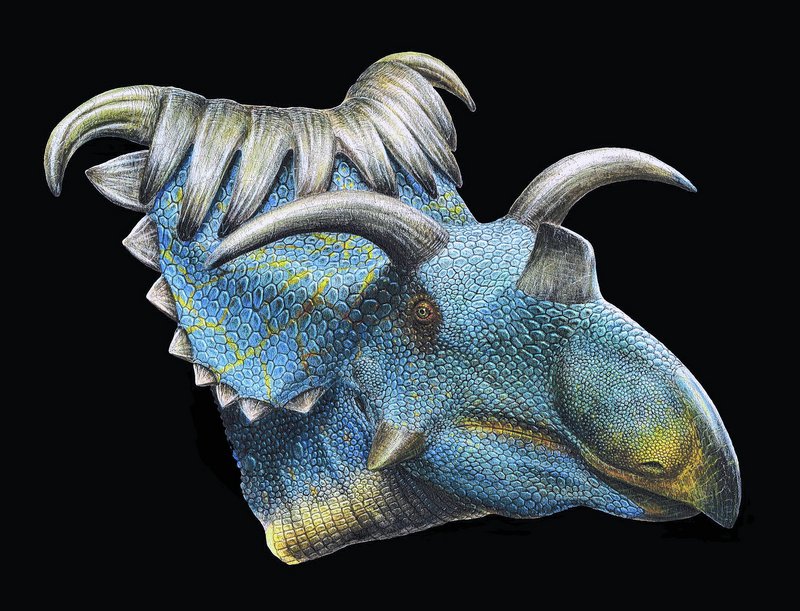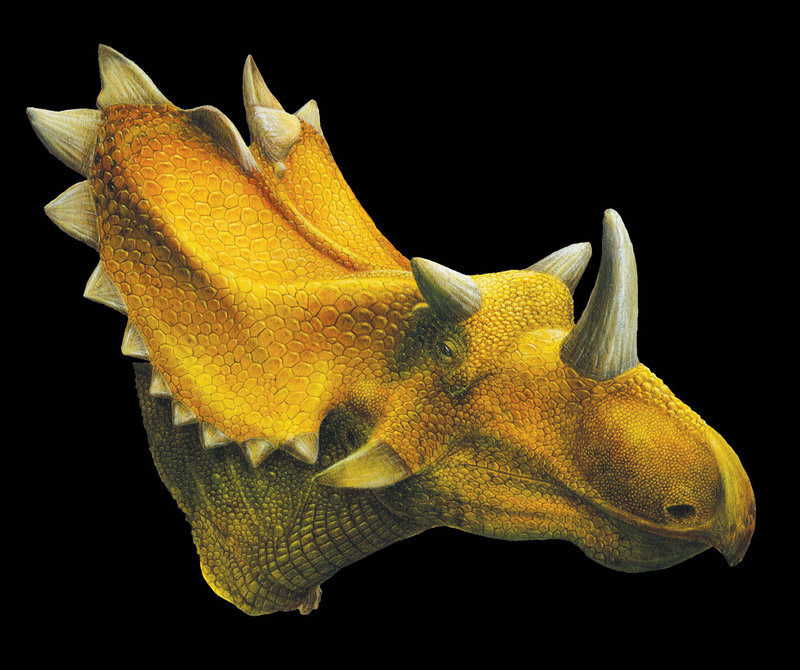SALT LAKE CITY – Scientists said Wednesday they’ve discovered fossils in the southern Utah desert of two new dinosaur species closely related to the Triceratops, including one with 15 horns on its large head.
The discovery of the new plant-eating species was reported Wednesday in the online scientific journal PLoS ONE, produced by the Public Library of Science.
The 15-horned Kosmoceratops richardsoni is considered tthe most ornately headed dinosaur known to man. The other dinosaur, which has five horns and is the larger of the two, was dubbed Utahceratops gettyi.
“It’s not every day that you find two rhino-sized dinosaurs that are different from all the other dinosaurs found in North America,” said Mark Loewen, a Utah Museum of Natural History paleontologist and an author of the paper published in the journal.
“You would think that we know everything there is to know about the dinosaurs of western North America, but every year we’re finding new things, especially here in Utah,” he said.
The Grand Staircase-Escalante National Monument has been a hotbed for dinosaur species discoveries in the past decade, with more than a dozen new species discovered. While it is a rocky, arid place now, millions of years ago it was similar to a swamp.
The Utahceratops has a large horn over the nose and short eye horns that project to the side rather than upward, similar to a bison. Its skull is about 7 feet long, it stood about 6 feet high and was 18 to 22 feet long. It is believed to have weighed about 3 to 4 tons.
The Kosmoceratops has similar facial features as the Utahceratops, but has 10 horns across the rear rim of its bony frill that point downward and outward. It weighed about 2.5 tons and was about 15 feet long.
The horns on both animals range in length from about 6 inches to 1 foot.
Paleontologists say the discovery shows that horned dinosaurs living on the same continent 76 million years ago evolved differently.
Send questions/comments to the editors.




Success. Please wait for the page to reload. If the page does not reload within 5 seconds, please refresh the page.
Enter your email and password to access comments.
Hi, to comment on stories you must . This profile is in addition to your subscription and website login.
Already have a commenting profile? .
Invalid username/password.
Please check your email to confirm and complete your registration.
Only subscribers are eligible to post comments. Please subscribe or login first for digital access. Here’s why.
Use the form below to reset your password. When you've submitted your account email, we will send an email with a reset code.